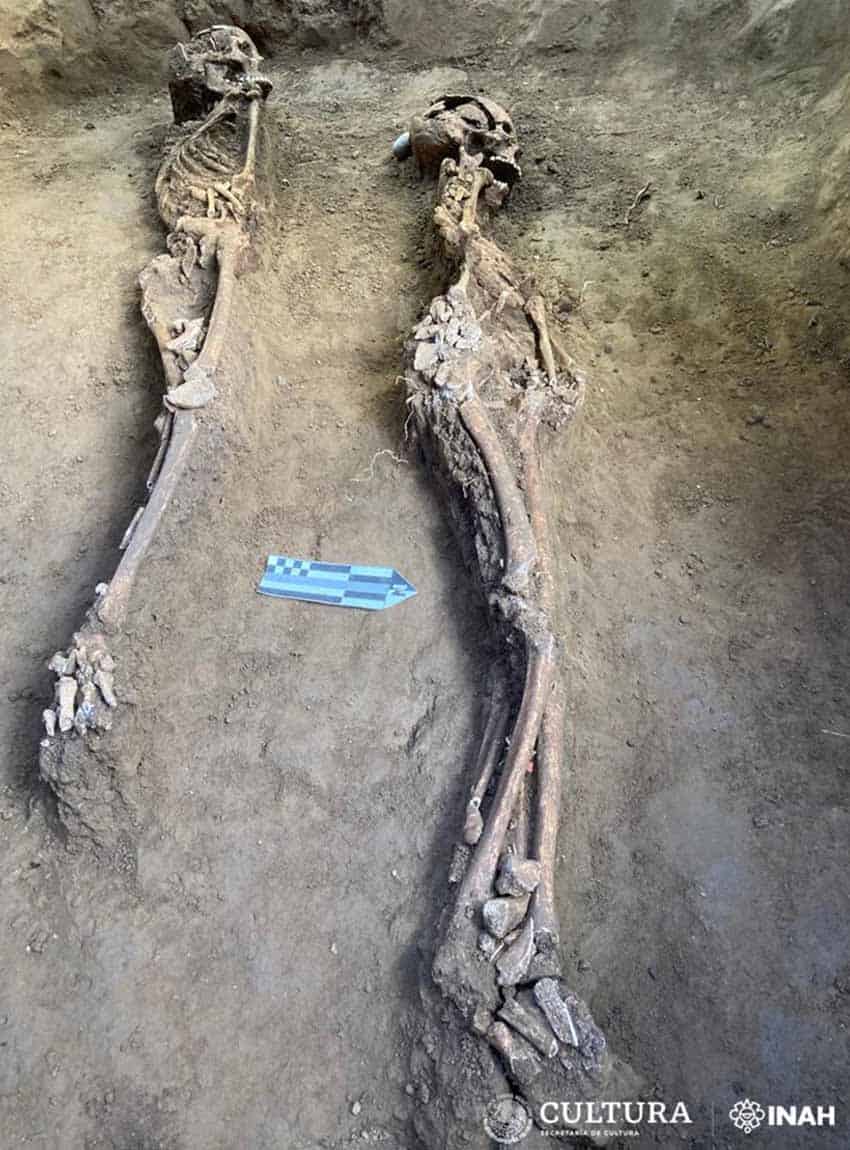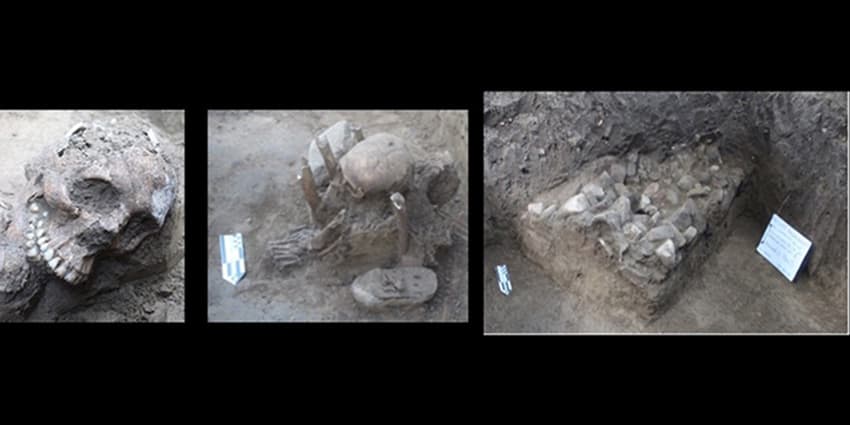6 burials found on same site as Young Ruler of Amajac II statue

Researchers from the National Institute of Anthropology and History (INAH) have found six human burials at the same site where the young Ruler of Amajac II statue was discovered earlier this year.
Veracruz residents discovered the pre-Columbian statue in May. Young Ruler II itself resembles another statue discovered in 2021 in the same municipality of Álamo Temapache, Veracruz, possibly representing a female Huastec ruler.
The human remains discovered by INAH archaeologists may date to Mesoamerica’s Middle Postclassic period (A.D. 1100–1200). María Eugenia Maldonado Vite, the researcher leading the excavations, reported that the burials were found under the fence of an elementary school. All were discovered at different depths, with the sixth burial found directly below where the Young Ruler of Amajac II was located.
Originally from the central Maya region, the Huastec people migrated to the Gulf Coast hundreds of years ago, settling over a large region encompassing parts of present-day Veracruz, Hidalgo, and San Luis Posotí. They became skilled metalworkers and builders, living in multiple independent city-states beyounfore being conquered by the Mexica in the 15th century.
Their descendants still live in the Huasteca region and there are about 170,000 Huastec speakers in Mexico today. Speakers refer both to themselves and their language, which is part of the Maya language family, as Teneek.
“[Burials] one and two were found next to each other at a depth between 1 and 1.20 meters, under the fence of the primary school,” Maldonado Vite explained, “both with dental filing, a common practice among the Huastecs.”

“The set of burials 3, 4 and 5 were shallower, between 30 and 40 centimeters [deep]. They were in a seated position and situated in a very small space, close to the school fence and near a drinking water pipe.”
The excavation also uncovered three vessels used as offerings, a jug, a small plate and other ceramic dishes.
The INAH emphasized that its excavation is being carried out in coordination with the community, who were able to witness the investigation. Maldonado Vite has also given presentations to primary school students to educate them about the team’s work.
With reports from La Jornada Maya and INAH
Source: Mexico News Daily

